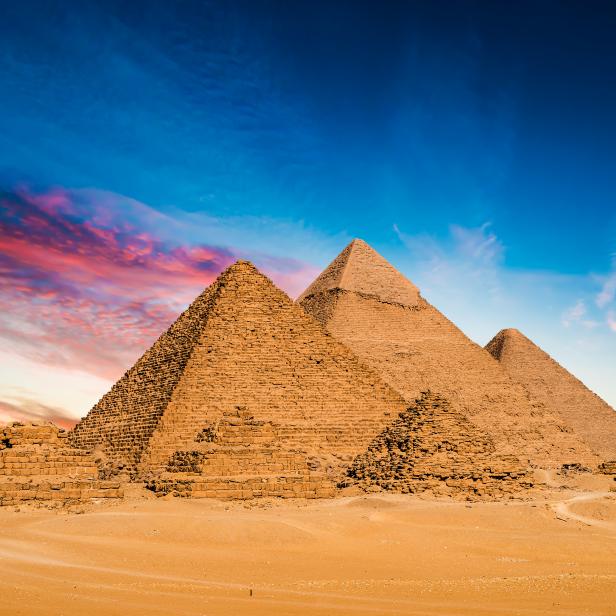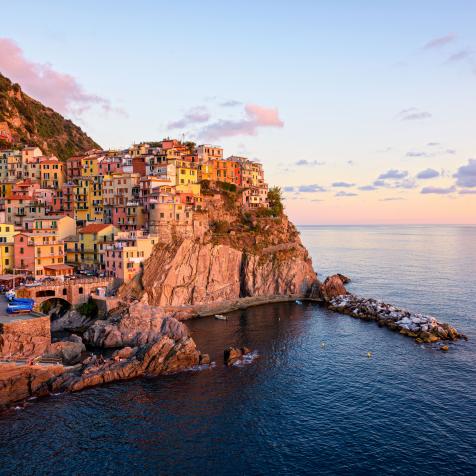
Getty Images/Xurzon
We May Finally Know How the Pyramids Were Built
Scientists have discovered new evidence that may explain how these iconic structures were built.
It's easy to see why people are so fascinated with the Egyptian pyramids. There are a lot of mysteries surrounding their construction. You probably don't believe the conspiracy theories that say they were built by aliens, but they weren't built by slave labor, either. So how did people 4,000 years ago create some of the largest, most iconic structures on Earth? We're still not totally sure — but a new discovery could make it a whole lot clearer.

Getty Images
History's Greatest Mystery
The oldest of the most famous pyramids in the world is also the largest. At 481 feet (146.5 meters) tall, it's not called the Great Pyramid of Giza for nothing. It was constructed at the order of Pharoah Khufu sometime around 2560 B.C.E., although how it was actually constructed has been shrouded by history. Still, bit by bit, archaeologists have been able to explain various mechanisms behind the building's construction. The stones themselves were mined from a quarry just south of the pyramid, and researchers believe that their journey across the desert was made easier by wetting the sand first. But that only explains how the stones got from one location to another, not how they were then lifted high into the air and deposited in an enormous triangle.
Researchers believed that action would have involved a ramp of some sort, and that's a pretty fair guess. It's not as if they had a five-story crane. But as for the actual evidence of such a ramp? Researches were coming up empty-handed. It's a particular challenge because the ramp would have needed to be very steep — an incline of about 20 degrees or so — and that would have posed a significant challenge for a 2.5 ton stone. Now, a new discovery at a different quarry might shed light on how ancient people managed such a feat.
A Ramp Above
At Hatnub, another rock quarry located in Egypt's eastern desert, an Anglo-French team found a very unusual ramp carved into the ground that hinted at some surprisingly advanced technological achievements. For one thing, it was pretty steep, but more significantly, it was flanked on both sides by staircases. These stairs were marked with recurring holes that could have contained wooden posts (which would have rotted away long ago). According to the mission's co-director Yannis Gourdon, "This kind of system has never been discovered anywhere else." What's more, it's dated to about 4,500 years ago, well before construction began on Khufu's big legacy.
Roland Enmarch, another scholar who participated in the expedition, noted that the patterns of the post holes in the stairs suggested a particular kind of rope-and-pulley system. Similar pulley systems are well-documented in Greek technology, but this discovery predates those devices by some 2,000 years. Since this specific ramp is cut into the rock itself, it wouldn't have been used to build the actual Great Pyramid. But it does suggest that the ancient Egyptians had a firm grasp on the kinds of simple machines that can be used to turn an impossible amount of hard work into just a whole lot of hard work.
This article first appeared on Curiosity.com.


















